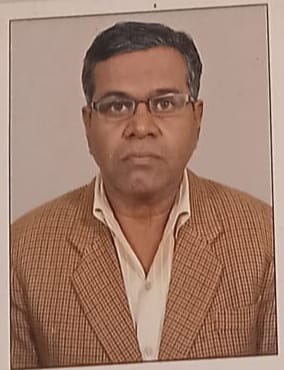Rise of Sheikh Abdullah
The Integration of Princely States and the Kashmir Conflict (1947-1949)
Preface
The partition of India in 1947 presented a monumental challenge—integrating over 560 princely states into the newly independent Union of India. While most princely states acceded peacefully under the leadership of Sardar Vallabhbhai Patel, three Muslim-majority states—Junagadh, Hyderabad, and Jammu & Kashmir—resisted merger. Their reluctance, influenced by political, religious, and strategic considerations, led to conflicts that shaped India’s territorial and diplomatic landscape. This article examines the events surrounding their integration, with a particular focus on Kashmir, which remains a contentious issue event today.
Junagadh’s Accession and Plebiscite
Junagadh, a princely state in Gujarat with a Hindu-majority population but a Muslim ruler, initially announced its accession to Pakistan in September 1947. This decision was met with widespread protests, as the people overwhelmingly favored joining India. The Nawab, Muhammad Mahabat Khan III, fled to Pakistan, leaving the administration in chaos. India intervened militarily, and a plebiscite was conducted in February 1948, in which 99% of the population voted in favor of joining India. This democratic exercise legitimized Junagadh’s integration, setting a precedent for resolving such disputes through popular will.
Hyderabad’s Standstill Agreement and Police Action
Hyderabad, the largest princely state under the rule of Nizam Mir Osman Ali Khan, sought independence. Despite signing a Standstill Agreement with India in November 1947, the Nizam’s government allowed the Razakars—a militant Muslim militia—to unleash violence against Hindus and even Muslims who opposed their ideology. The Indian government, fearing a breakdown of law and order, launched Operation Polo in September 1948, a military intervention that swiftly brought Hyderabad under Indian control. The operation ended the Nizam’s resistance, and Hyderabad was formally integrated into India.
Kashmir’s Ambiguity and the Tribal Invasion
The most complex case was Jammu & Kashmir, a Muslim-majority state ruled by Maharaja Hari Singh, a Hindu. Unlike Junagadh and Hyderabad, Hari Singh initially sought independence rather than accession to either India or Pakistan. However, Pakistan, unwilling to accept this, engineered a tribal invasion in October 1947, with Pashtun militias backed by the Pakistani army attacking Kashmir. The raiders pillaged Baramulla, committing atrocities against civilians, which forced Hari Singh to seek India’s help.
India agreed to intervene only after Hari Singh signed the Instrument of Accession on October 26, 1947, legally merging Kashmir with India. Indian troops were airlifted to defend Srinagar, pushing back the invaders. However, by then, Pakistan had seized control of Gilgit-Baltistan and parts of western Kashmir (now Pakistan-occupied Kashmir, or PoK).
The UN Intervention and Ceasefire
As the war escalated, Prime Minister Jawaharlal Nehru referred the Kashmir issue to the United Nations (UN) in January 1948, seeking a peaceful resolution. The UN called for a ceasefire, which came into effect on January 1, 1949, establishing the Line of Control (LoC). The UN also recommended a plebiscite to determine Kashmir’s future, contingent upon Pakistan withdrawing its forces—a condition that was never fulfilled.
Cold War geopolitics influenced the UN’s stance, with Western powers, particularly Britain and the US, leaning towards Pakistan due to strategic interests in the region. India, still recovering from Partition, lacked military and economic strength to prolong the conflict.
Sheikh Abdullah’s Reforms and Political Shifts
To consolidate India’s position in Kashmir, Nehru appointed Sheikh Abdullah, a popular Kashmiri leader, as the Prime Minister of Jammu & Kashmir in 1948. Abdullah introduced sweeping land reforms, redistributing land from feudal landlords (mostly Hindus) to peasants (mostly Muslims), drastically altering the socio-economic landscape. These reforms, along with voting rights for adults and anti-usury laws, made him immensely popular among the masses but alienated the Hindu minority.
In response, Prem Nath Dogra founded the Praja Parishad in 1949, advocating for Hindu rights and opposing Abdullah’s policies. This polarization sowed the seeds of future communal tensions in the region.
The Rise of Sheikh Abdullah: A Complex Legacy
Sheikh Abdullah, a socialist by philosophy, emerged as a pivotal leader in Kashmir’s politics. Unlike many of his contemporaries, he rejected Jinnah’s Two-Nation Theory, advocating for Kashmir’s unique identity.
Early Life and Politics
Abdullah’s educational background and charismatic leadership enabled him to connect with the masses. Initially, he wasn’t favored by Raja Hari Singh, which led him to form his own Muslim party, the All Jammu and Kashmir Muslim Conference. Later, he transformed it into the National Conference, broadening its appeal beyond Muslims.
Relationship with Nehru and India
Abdullah’s relationship with Jawaharlal Nehru was complex. Nehru, aware of India’s vulnerable position in 1947-48, agreed to a ceasefire and the possibility of a plebiscite, making Abdullah the Prime Minister of Jammu and Kashmir. Abdullah’s vision for Kashmir aligned with India’s secular principles, but he maintained a critical stance towards Jinnah’s policies.
Land Reforms and Popularity
As Prime Minister, Abdullah implemented drastic land reforms, redistributing land from landlords to tillers. This move, favoring the majority community, made him extremely popular among Muslims but created discontent among the minority Hindu population. The reforms transformed the agrarian landscape, shifting the balance from 75% landowner share to 25%, and 25% tiller share to 75%.
Communal Tensions and Territorial Disputes
The land reforms and Abdullah’s popularity contributed to growing communal tensions. Prem Nath Dogra’s formation of the Praja Parishad in 1949, advocating for Hindu rights, further polarized the region. The tribal invasion from Pakistan and the subsequent capture of Pakistan-Occupied Kashmir (PoK) added to the territorial disputes.
Legacy
Sheikh Abdullah’s legacy is multifaceted. His commitment to socialism and secularism shaped Kashmir’s politics. However, his land reforms and popularity also contributed to communal tensions and territorial disputes. Understanding his complex legacy requires acknowledging both his progressive policies and the challenges that arose during his tenure.
Conclusion
The integration of Junagadh, Hyderabad, and Kashmir into India followed different trajectories, shaped by military, political, and diplomatic maneuvers. While Junagadh and Hyderabad were successfully assimilated, Kashmir’s unresolved status led to enduring conflict. The tribal invasion, UN intervention, and subsequent political developments entrenched the territorial dispute between India and Pakistan. Nehru’s decision to seek UN mediation, though pragmatic given India’s vulnerabilities, left Kashmir’s fate in limbo. The reforms under Sheikh Abdullah strengthened pro-India sentiments temporarily but also deepened communal divides, influencing Kashmir’s turbulent political future.
Summary
- Junagadh merged with India after a plebiscite overturned its ruler’s accession to Pakistan.
- Hyderabad was integrated through military action after Razakar violence.
- Kashmir’s accession followed a tribal invasion, leading to war and UN intervention.
- Cold War politics influenced Western support for Pakistan.
- Sheikh Abdullah’s land reforms boosted pro-India sentiment but also increased communal tensions.
- The Kashmir conflict remains unresolved, with PoK under Pakistan’s control.
References
- Guha, Ramachandra. India After Gandhi: The History of the World’s Largest Democracy.
- Khan, Yasmin. The Great Partition: The Making of India and Pakistan.
- Schofield, Victoria. Kashmir in Conflict: India, Pakistan, and the Unending War.
- UN Security Council Resolutions on Kashmir (1948-1949).
- Government of India White Papers on Hyderabad and Junagadh (1948).
- Historical accounts of Kashmir’s accession to India
- Sheikh Abdullah’s speeches and writings
- Scholarly analyses of Kashmir’s politics and land reforms.
- UPSC Educator, lecture.







